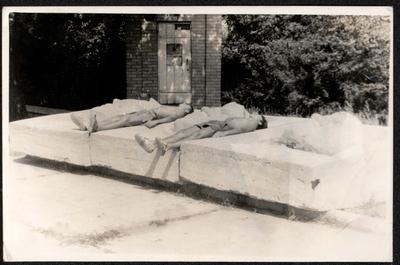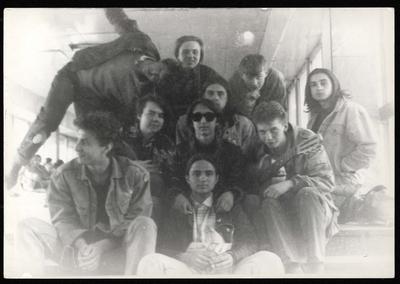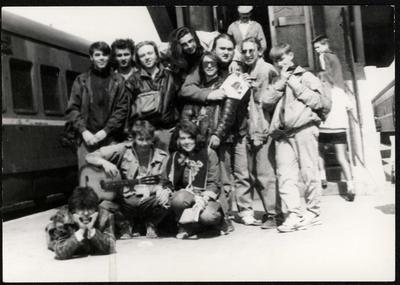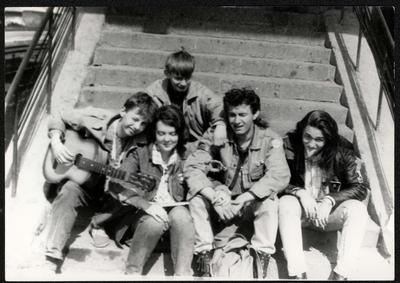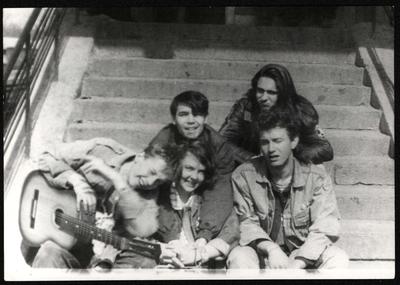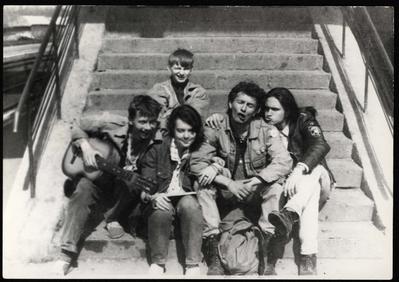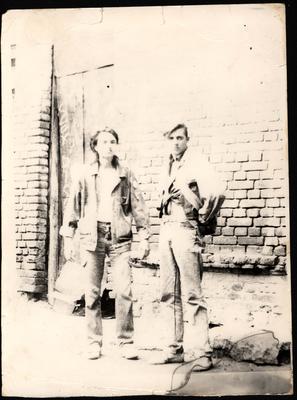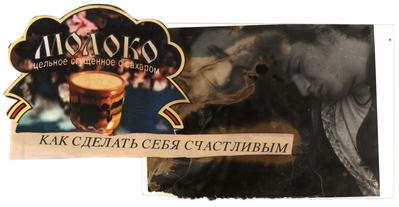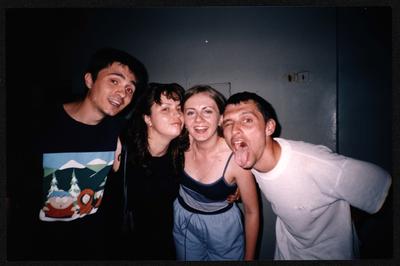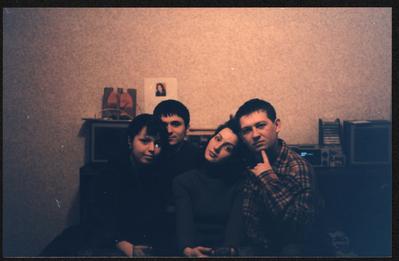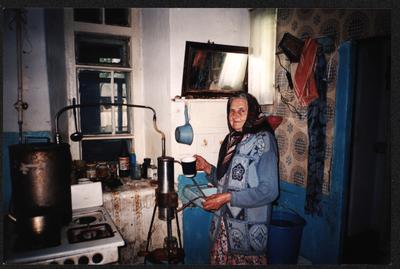Кость Бялік
Ці фотографії показують життя неформального середовища Слов'янська у 1990-их роках.
Їх зібрав Кость Бялік (нар. 1974) — один з членів цього середовища. У 2020 році він створив фейсбук-групу, у якій публікує інформацію про 1990-і роки, неформальну культуру і тусовку Слов'янська. За його спостереженнями, це пожвавлює людей, залучає до обговорення, пригадування, спонукає до творчості, адже тепер, на відміну від 1990-их років, є більше можливостей та інструментів.
Біографія Костя показує, з якими труднощами стикалися представники неформальної культури. Він закінчив Педагогічний інститут, але лише чотири роки працював у школі. У цей час вів подвійне життя, адже мав приховувати участь у концертах, захоплення альтернативною музикою, мав відмежовувати одяг, який хотів носити, від того, який потрібно було надягати на роботу. Тому він пішов працювати на місцеве радіо “Бит”. Оскільки вдень потрібно було “крутити” попсу, то Кость вів нічні ефіри, де можна було вмикати джаз, блюз, розповідати про західну електронну музику. Він експериментував із залученням слухачів, вигадував конкурси. Зранку приступав до роботи вантажником, а у вільний час проводив репетиції з групою.
Кость Бялік згадує, що для молоді неформальна культура була сферою, де можна було розвивати свою духовність. У ній люди шукали естетику, нею прагнули відмежуватися від “гопніків, від пошлого, від вторинного”. Частина цієї культури — захоплення музикою і гра на музичних інструментах. Але у Слов'янську не було спеціальних місць, де можна було вчитися грати. Ті, хто мав доступ до бази вищих навчальних закладів, вчилися там грати на музичних інструментах, які використовували на виступах до офіційних свят. Співали і грали на гітарах в парках, у тролейбусах, електричках — через це стикалися з несприйняттям суспільства. Якщо ж виступали на концертах, то прагнули залучати публіку, щоб вона не була пасивним споживачем.
У великих містах був чіткий розподіл неформалів: панки, хіпі, металісти. Коли вони стикалися, то могли виникати бійки. У малих містах, як у Слов'янську, таких людей було мало і вони не ділилися на групи. Зовнішні атрибути — довге чи, навпаки, зголене волосся, булавки на одязі, металеві прикраси, фєньки, — дозволяли впізнати “своїх”, з якими буде цікаво. Однак, якщо людина не була начитана, наслухана, то вона не могла ввійти у середовище неформалів. Через те, що неформалів було мало, вони були дружні, готові разом захищатися від “гопніків”. Суперечки як з місцевими бандитами, так і з “ментами” переважно вирішували усно.
Середовище об’єднували концерти, спільні тусовки, поїздки у Донецьк, у Харків, у Київ на точки, де можна було обмінятися платівками. Наприклад, на Петрівці купували книги і касети. Дехто з тусовки їздив також у Санкт-Петербург на могилу Віктора Цоя. Були також і контакти з Конгресом Українських Націоналістів, як вираз регіональної нонконформності. Частина фото показує також поїздки до міст неподалік - Краматорська, Дружківки, Миколаївки.
Фотографії та колажі з колекції створювали самі ж учасники. Сюжети зосереджені довкола способів проведення часу, поїздок на концерти. Для багатьох фотографій герої позують — при цьому дуркують, кривляються, обіймаються чи демонструють музичні інструменти. Це дозволяє зрозуміти атмосферу, яка панувала у середовищі, побачити характерний одяг і атрибути.
В описі використана інформація з інтерв’ю Ірини Склокіної та Костя Бяліка.
